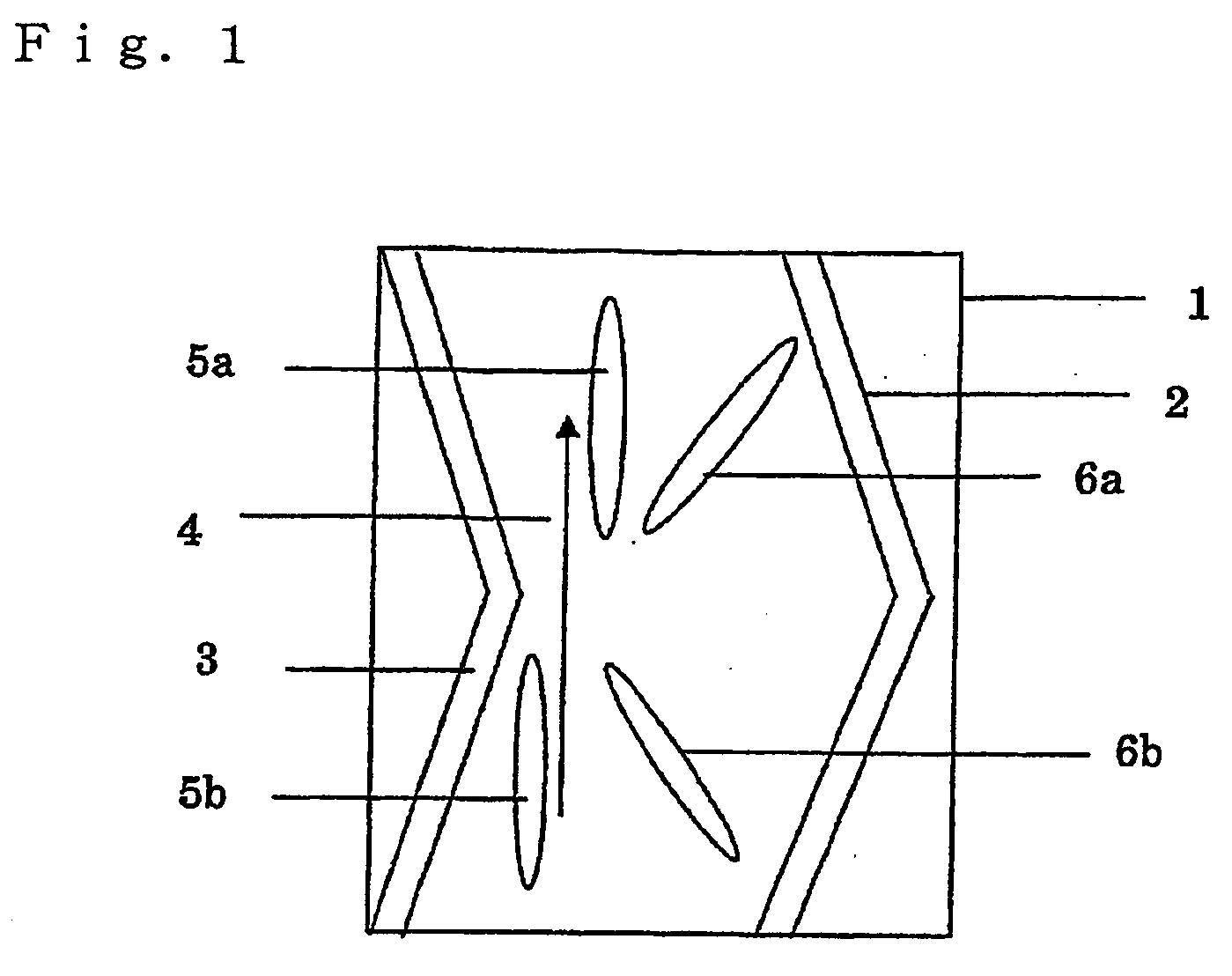Optically anisotropic film, brightness increasing film, laminated optical film, and image display device using the same
- Summary
- Abstract
- Description
- Claims
- Application Information
AI Technical Summary
Benefits of technology
Problems solved by technology
Method used
Image
Examples
example 1
Synthesis of G-1G
[0215]A compound G-1G was synthesized as shown in the following scheme.
(Synthesis of G-1A)
[0216]10.2 g of 6-bromo-2-hydroxy-3-methoxybenzaldehyde was dissolved in 40 ml of dimethylformamide, thereto were added 50 g of sodium methoxide (28% methanol solution) and 0.8 g of copper iodide, and the resultant mixture was stirred at 95° C. for 8 hours. After cooling the mixture, water was added thereto, and the resultant was subjected to extraction with ethyl acetate. The obtained organic layer was evaporated under reduced pressure to obtain 7.4 g of a crystal of G-1A.
(Synthesis of G-1B)
[0217]100 ml of dichloromethane was added to 7.4 g of G-1A and 11 ml of diisopropylethylamine, and 7.0 ml of 2-methoxyethoxymethyl chloride (MEMCl) was added thereto dropwise at an inner temperature of 30° C. or lower. The resulting mixture was stirred at the room temperature for 5 hours, water was added thereto, and the mixture was subjected to extraction with dichloromethane. The organic ...
example 2
Synthesis of G-2
[0223]A compound G-2 was synthesized as shown in the following scheme.
[0224]0.43 g of methanesulfonyl chloride was dissolved in 10 ml of tetrahydrofuran, and cooled to 0° C. To the solution were added 1.0 g of 4-(4-acryloyloxybutyloxy)benzoic acid and 10 ml of a tetrahydrofuran solution containing 0.51 g of diisopropylethylamine dropwise. The resulting mixture was stirred at 0° C. for 1 hour, and 0.51 g of diisopropylethylamine and 0.02 g of 4-dimethylaminopyridine were added thereto. To this was further added 10 ml of a tetrahydrofuran solution containing 0.14 g of G-1G obtained according to Example 1. The reaction liquid was stirred at the room temperature for 12 hours, 100 ml of methanol was added to the reaction liquid, and thus deposited crystal was isolated by filtration. The isolated crystal was dried and purified by a column chromatography to obtain 0.22 g of a crystal of G-2. Thus obtained G-2 had the following NMR spectrum.
[0225]1H-NMR (CDCl3, Tetramethylsi...
example 3
Production of Perpendicular Alignment Optically Anisotropic Films A1 to A3 Using Synthetic Liquid Crystal Compounds
[0229]A commercially available polyvinyl alcohol (PVA) MP-203 available from Kuraray Co., Ltd. was dissolved in a mixed solvent of water / methanol=4 / 1, and the obtained liquid was applied to a glass substrate by bar coating and heated at 1200° C. for 5 minutes to prepare a substrate having an alignment layer. The alignment layer was rubbed, and the liquid crystal compound G-2 (100 parts by mass), a polymerization initiator IRGACURE 907 available from Ciba-Geigy Japan (3 parts by mass), a sensitizer KAYACURE DETX available from Nippon Kayaku Co., Ltd. (1 parts by mass), the following homeotropic alignment layer interface alignment agent (2 parts by mass), and the following homeotropic air interface alignment agent (0.2 parts by mass) were dissolved in chloroform (350 parts by mass) and applied by bar coating to the alignment layer. The applied liquid was heated to 180° C....
PUM
 Login to View More
Login to View More Abstract
Description
Claims
Application Information
 Login to View More
Login to View More - R&D
- Intellectual Property
- Life Sciences
- Materials
- Tech Scout
- Unparalleled Data Quality
- Higher Quality Content
- 60% Fewer Hallucinations
Browse by: Latest US Patents, China's latest patents, Technical Efficacy Thesaurus, Application Domain, Technology Topic, Popular Technical Reports.
© 2025 PatSnap. All rights reserved.Legal|Privacy policy|Modern Slavery Act Transparency Statement|Sitemap|About US| Contact US: help@patsnap.com



